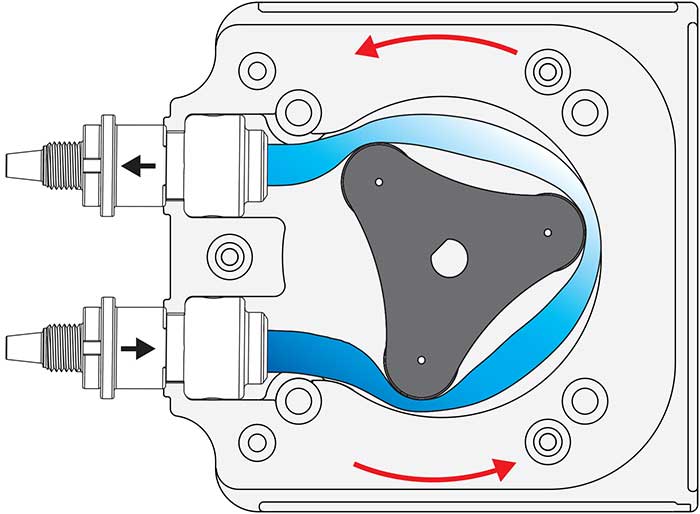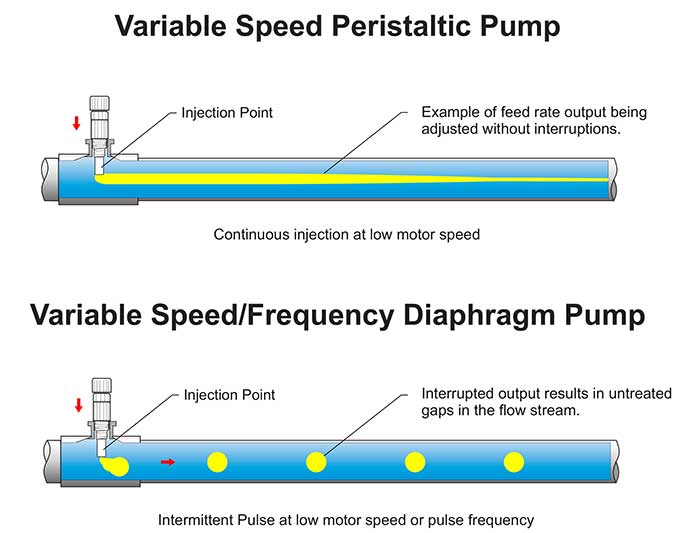In a peristaltic metering pump—a type of positive displacement pump—fluid is pumped through a flexible tube in a peristaltic motion. Rollers are attached to a rotor that is controlled by a motor. As the rotor turns, the rollers pinch the tubing to force the fluid through. When the tube is not compressed, the fluid flow is brought into the tube. Peristaltic metering pumps excel at pumping dirty fluids that contain particulate matter into lower pressure systems because they have no check valves to clog. The gentle forces created during the peristaltic pumping action do not damage delicate fluids within the tube. In contrast, diaphragm metering pumps include check valves in the suction and discharge side of the pump head. If either set of check valves becomes fouled, the pump will not meter accurately, and loss of prime may occur. Diaphragm pumps may create shear stress on fluids, particularly if the pump employs a high velocity stroke action.
 Image 1. Peristaltic pump head. (Images courtesy of Blue-White Industries)
Image 1. Peristaltic pump head. (Images courtesy of Blue-White Industries)Brewery Wastewater
A California craft brewery uses peristaltic pumps to for purification of wastewater. The brewery and the packaging hall generate about 100,000 gallons of wastewater per day. A pump was needed that would not vapor lock from the aggressive off gassing from chemicals being injected. The brewery uses two peristaltic pumps to inject 12.5 percent sodium hypochlorite into the membrane bioreactor filter backwashes. A third pump injects 93 percent sulfuric acid prior to reverse osmosis, and an additional pump injects 12 to 14 percent sodium hydroxide to bring reclaimed water to a pH of 8 to prevent pipe corrosion. The peristaltic pumps allow the gas accumulation to be pumped through the tubing while maintaining a constant flow rate without vapor lock. Image 2. Intermittent flow versus continuous flow.
Image 2. Intermittent flow versus continuous flow.
